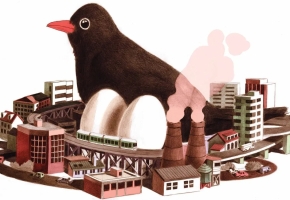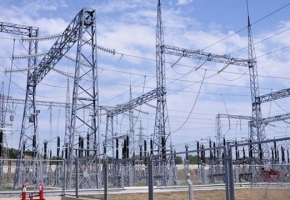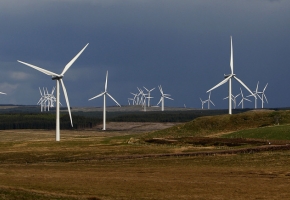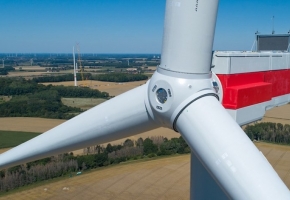Evolution is happening faster than we thought

Serenely incubating eggs in the inner city, the bird has little in common with its shy, reclusive ancestors that nested in forests. Early in the 19th century, probably in Germany, blackbirds began settling in cities. By the mid-20th century, they were hopping around on stoops all over Europe.
Many “wild” bird species have set up camp in cities. But the thing about Europe’s urban blackbirds (a relative of the American robin) is that they are very different from their forest-dwelling relatives. They have stockier bills, sing at a higher pitch (high enough to be heard over the din of traffic), are less likely to migrate (in cities there’s food and warmth year-round).
For many of these differences, genes are responsible. The birds’ DNA, after 200 years or less of adaptation, has diverged from that of their rural ancestors.
For a long time, biologists thought evolution was a very, very slow process, too tardy to be observed in a human lifetime. But recently, we have come to understand that evolution can happen very quickly, as long as natural selection is strong.
And where else to find such strong natural selection than in the heart of a big city? The urban environment is about as extreme as it gets. Temperatures in the city center can be more than 10 degrees higher than in the surrounding countryside. Much of the city is clad in impervious surfaces of stone, glass, steel and tarmac. There is pollution of soil, water and air, mainly human-derived food sources, and an especially motley crew of local and invasive flora and fauna.
With urban environments expanding all over the world, wildlife and biologists alike are starting to treat the city as a true ecosystem. Many species’ original habitats are being squeezed into annihilation. For them, it’s adapt or die. And field biologists are beginning to realize that the expanding urban sprawl is perhaps not something to be depressed about, but rather something very exciting, as entirely novel forms of life are evolving right under our noses.
In fact, available data highlights one feature of urban nature that sets it apart from all other ecosystems: globalization. City-adapted wildlife is likely to hitch rides on human transportation and colonize other cities – at least within the same climate zone.
What’s more, as cities continue to grow, they will exchange more goods, people and information over greater distances. So each change in the environment (a particular pollutant, a certain novelty in road construction, a new kind of food source) will spread quickly across the world, and urban wildlife everywhere will be faced with the same novel challenge. Those that evolve adaptations will also easily spread to other cities, leading to a truly globalized urban flora and fauna – continually evolving at breakneck speed to keep up with an increasingly human-dominated world.
Source: The New York Times
Image: Antoine Maillard/NYT







